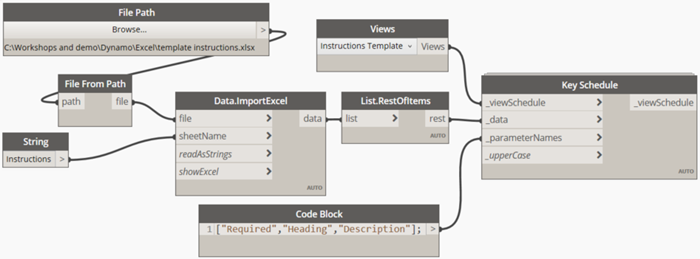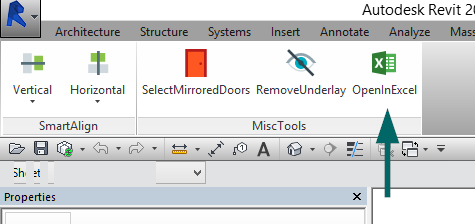Revit Plugins for Unleashing Your Style Possible
Wiki Article
Excel Empowerment: Supercharge Your Revit Projects With Seamless Information Import
With seamless information import, Excel empowerment can be the secret to unlocking your task's full potential. Visualize enhancing the import process and making the most of performance via smooth data assimilation. In this short article, we will certainly share ideas and tricks for making use of Excel in your Revit projects.The Power of Master Revit Projects
You can supercharge your Revit tasks by harnessing the power of Excel for smooth information import. Excel is a versatile tool that can greatly boost your process and performance in Revit (revit add ins). With Excel, you can quickly import and handle huge amounts of information, saving you effort and timeOne of the key advantages of using Master Revit is its capacity to deal with intricate calculations and solutions. You can utilize Excel to execute computations on your information, such as creating quantities, determining expenses, or evaluating efficiency. When working with big tasks that require substantial estimations., this can be particularly useful.

In addition, Excel gives a straightforward and acquainted user interface for collaborating with data. You can organize and control your information in a spread sheet format, making it easy to watch and modify. This can be particularly practical when teaming up with others or when you need to make quick changes to your task information.
In addition, Excel permits you to conveniently import and export data in between Revit and various other software program applications. You can import information from exterior resources right into Revit, such as product specs or devices routines, and export information from Revit to Excel for additional analysis or reporting.
Streamlining Data Import With Master Revit
When making use of Excel as a device,Simplifying information import in Revit becomes simpler. With Excel, you have the power to perfectly import and manage big quantities of data in your Revit projects. By utilizing the acquainted user interface and performance of Excel, you can save time and rise efficiency in your process.One of the key benefits of utilizing Excel for data import in Revit is the capability to easily organize and adjust information before importing it right into your job. With Excel's effective attributes, such as arranging, filtering, and formulas, you can promptly tidy up and format your data to fulfill the needs of your Revit job.
Furthermore, Excel permits you to import information from various resources, such as data sources, spread sheets, or also web-based applications. This flexibility gives you the freedom to collect information from different systems and settle it right into one central area for simple access and monitoring.
On top of that, Excel offers the choice to create customized design templates for data import in Revit. By creating templates tailored to your job's particular demands, you can ensure consistency and precision in your data import process.
Total, using Excel as a device for information import in Revit improves the procedure and enhances your performance. So why not capitalize on this effective tool and supercharge your Revit jobs with smooth data import utilizing Excel?
Taking Full Advantage Of Effectiveness With Seamless Data Assimilation
Maximize performance by effortlessly integrating and taking care of data in your workflow. Gone are the days of manually inputting data into your system, wasting valuable time and resources. With smooth information combination, you can improve read more your procedures and supercharge your performance.
When you have a smooth integration system in location,Taking care of data becomes a wind. You can quickly arrange and categorize your information, making it easier to fetch and evaluate. Bid farewell to the days of searching via endless spread sheets for that piece of details you require.

Excel Idea for Revit Projects
With these ideas and methods, you'll have the ability to successfully manage your Revit jobs making use of Excel. Among the first things you can do is to utilize Excel's effective sorting and filtering functions. This will certainly permit you to quickly organize and analyze your job information. For instance, you can sort aspects by their names or filter them based upon specific criteria, such as their standing or area. Another helpful feature is the capacity to create solutions in Excel. You can use formulas to compute quantities, carry out complicated computations, and also automate particular jobs. This can conserve you a lot of time and initiative in your Revit jobs. In addition, you can make use of Excel to develop custom-made templates for data import and export. By doing this, you can make sure uniformity and accuracy when moving information in between Revit and Excel. Lastly, don't forget Excel's conditional formatting feature. You can utilize this to highlight particular components or worths based on Click This Link particular conditions. This can help you quickly identify and address any kind of concerns or abnormalities in your job data. In general, grasping these Excel techniques and tips will greatly boost your capacity to manage and control information in your Revit projects.Harnessing the Excel-Revit Link for Success
To maximize your Excel-Revit link, make the most of the capability to easily synchronize and transfer task info. By harnessing this effective connection, you can supercharge your Revit jobs and streamline your process. With just a few easy actions, you can import data from Excel straight into Revit, saving you time and ensuring accuracy.Among the essential advantages of the Excel-Revit connection is the capacity to transfer data flawlessly. Whether you are importing schedules, space information, or even geometry details, Excel offers a straightforward interface that enables you to arrange and adjust your data prior to importing it into Revit. This implies you can conveniently update and modify your job details in Excel, and with a couple of Homepage clicks, move those changes directly right into your Revit version.
Along with transferring data, the Excel-Revit connection also permits synchronization. This indicates that any kind of changes made in Excel can be immediately upgraded in Revit, making certain that your task information is constantly approximately day. This synchronization feature is especially helpful when taking care of huge and complex tasks, as it removes the demand for hand-operated information access and reduces the danger of mistakes.
Conclusion
So there you have it - the power of Master Revit tasks can not be taken too lightly. By streamlining data import and maximizing effectiveness with smooth information assimilation, you can supercharge your jobs and attain success. With the Excel-Revit link, you have the tools to take your jobs to the next degree and attain amazing results. So do not wait any type of longer, begin harnessing the power of Master your Revit tasks today and unlock a globe of opportunities.You can supercharge your Revit projects by using the power of Excel for smooth data import. With Excel, you have the power to flawlessly import and handle big amounts of information in your Revit jobs (revit tool). In general, mastering these Excel techniques and ideas will greatly boost your capability to manage and adjust information in your Revit projects
Whether you are importing routines, area information, or even geometry details, Excel offers a straightforward interface that permits you to organize and control your data before importing it into Revit. By streamlining data import and maximizing effectiveness with smooth data integration, you can supercharge your projects and accomplish success.
Report this wiki page